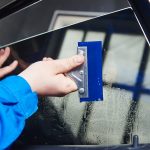In 2015, car breakdowns hit record highs – even with all the new technology being put into vehicles. According to one report, AAA rescued 32 million drivers from flat tires, key issues, and dead batteries.
Unless you’re really lucky, you’re going to experience some form of car failure on the road during your driving career. So knowing what to do if your Chrysler breaks down is integral to staying safe, efficiently repairing your car, and saving yourself lots of headaches.
If you’re a Chrysler owner and you’re preparing for the worst or if you’ve just experienced a breakdown, here’s what you should do.
What to Do If Your Chrysler Breaks Down
If your vehicle stutters to a stop on your way to work or school, don’t let yourself fall into the clutches of terror and panic. Instead, follow these steps.
Find Your Online Car Repair Manual Today! ->>
1. Stay Calm
The best thing you can do is try to keep a cool head. Some breakdowns are frightening and can affect your control over the vehicle.
In most instances, your best bet is to carefully slow to a stop. Use the hazards to signal to motorists that something is wrong and utilize your turn signal to let them know where you’re headed.
For this reason, it’s best to be familiar with where your hazards are located; practice turning them on before a real accident strikes.
With all the new options on dashboards today, one UK survey found that 98 percent of drivers don’t know what all the buttons do in their vehicle and over one in five can’t identify the hazard light symbol. Know where your hazard button is so you are prepared.
2. Pull Over
If you have control over the car, pull it to the right shoulder as far away from the road as you can manage. If you can get your car off the pavement completely, that’s even better.
While road shoulders work in a pinch, the idea is to get your vehicle as far from the street as possible. In urban areas especially, you put yourself at risk of being hit even on the shoulder of the road. This element of danger rises if you go to the left shoulder because you have to cross into oncoming traffic.
So stick to the right shoulder or completely off the street to the right.
3. Safety First
At this point, you might be shakey and adrenaline-infused. Take a few deep breaths and assess the situation.
Ask yourself the following:
- Can you move your car to an even safer spot or would you risk causing an accident?
- Are your hazards on and is your car in an easy-to-see spot for oncoming drivers?
- Is your vehicle smoking or is it safe to remain inside?
These questions help you determine what to do next.
Your priority here is to make your vehicle as visible as possible. Keep your hazards on. If you have a bright scarf or cloth, consider sticking it in your window to draw attention.
Likewise, if you have flares, safely light them and place them around your vehicle to alert drivers of your situation.
If you can move your vehicle to a better location, carefully weigh the risks. Doing so may put you in more harm. In most cases, it’s best to keep your car parked as far away from the road as possible.
Finally, ensure it’s safe for you to remain in the vehicle. If your car is smoking, leave the vehicle and stand outside. Stay to the vehicle’s side (away from the road) so drivers can easily see you.
If you’re safe in your automobile, stay inside.
4. Call 911
Your next order of business is to dial 911 and alert police of your situation. This may help you avoid a traffic ticket and is a means for further help if you need police assistance to move your car to a safer location. Further, the operator will give you additional advice.
Most states require drivers report a disabled vehicle to the police as quickly as possible.
If you do not have a cell phone and you must leave your vehicle, write a note explaining your situation (with the date and time) and leave it in the windshield of your car or under the wiper.
5. Call a Towing Company
Contact a towing company and have your car moved to a safer location. If possible, ask for the cost to have it towed to your local repair shop or to your home.
When owners purchase cars, they oftentimes come with roadside assistance. Always know your options in case an emergency arises.
Keep in mind trustworthy tow companies display their Department of Transportation ID number. Many also have extra license numbers.
6. Determine the Problem
Discuss the occurrence with an automobile mechanic or, if you’re a do-it-yourself-er, attempt to identify the problem yourself. Consider what noises your car made prior to breaking down, how it handled and any unique smells.
Browse forums and consumer reports to see if others have experienced a similar issue for your Chrysler model and year.
Before agreeing to have a mechanic fix your vehicle, research prices and parts. Is the problem something you could fix yourself or is it a complicated repair that you should leave to a mechanic?
7. Contact Your Auto Repair Shop
Finally, contact an auto repair shop you trust or complete the repairs yourself.
While your car is being fixed, consider finding ulterior means of transportation. Ask to borrow a family member’s car, seek rides from friends, or rent a car until you have your own vehicle in working condition.
Preparations for Success
Knowing what to do if your Chrysler breaks down ahead of time is an easy way to make sure you’re prepared. Furthermore, it will help you keep calm and stay safe.
Has your Chrysler recently stuttered to a halt? If so, browse our Chrysler repair manuals to find the one that’s right for your model. These manuals provide all the important information about your vehicle, including the specific parts it needs.
Preparations for the worst mean extra knowledge that could, in the event of an accident, save your money and even your life.







